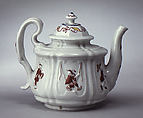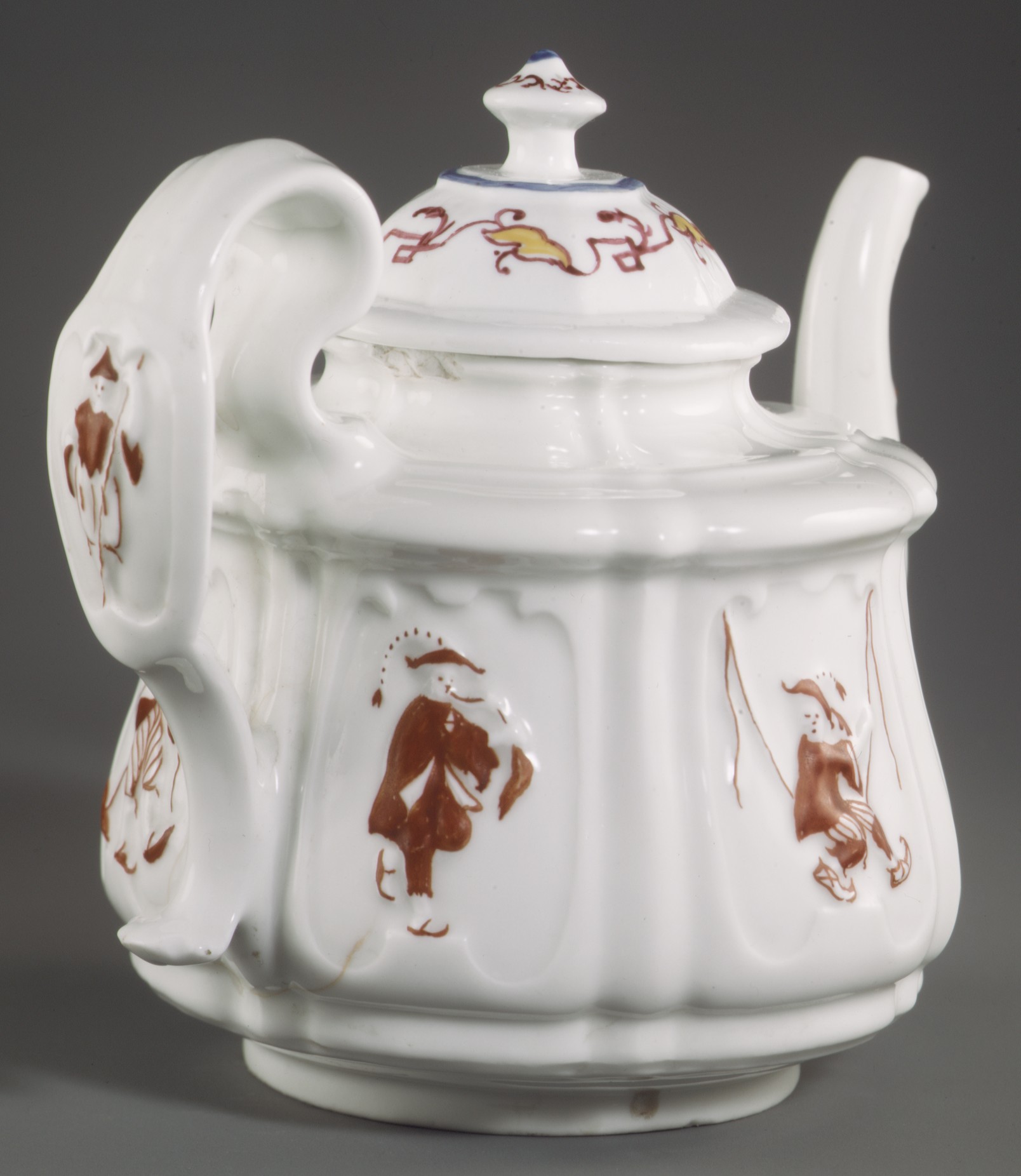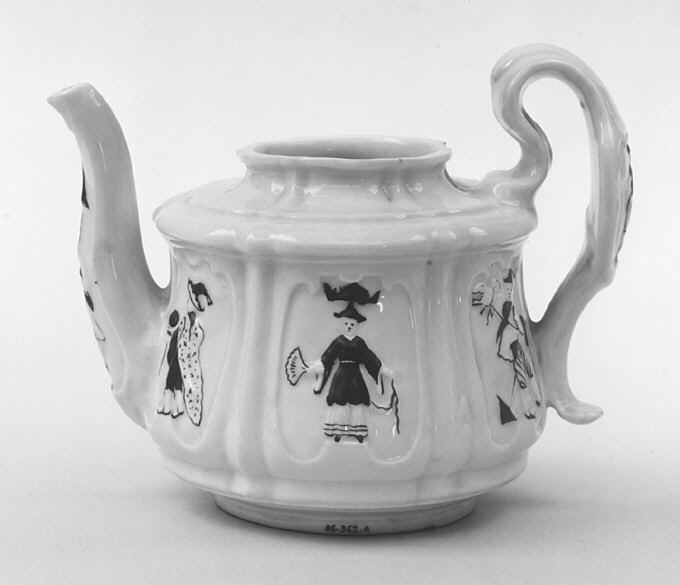Teapot
Factory Vezzi Factory Italian
Not on view
The third factory in Europe to produce hard-paste porcelain was founded in Venice in 1720 by Francesco Vezzi (1651–1740). The previous year, Vezzi had visited Vienna, where it is likely he became aware of Claudius Du Paquier's new porcelain factory. Presumably, it was during this visit that Vezzi met Christoph Conrad Hunger, who in 1720 left du Paquier's employ and moved to Venice. In the following year, Hunger was recorded as a partner of the Vezzi enterprise, and it must have been Hunger who provided the technical expertise to the factory.
The Vezzi factory produced porcelain for only a seven-year period, and it is thought that less than 200 pieces of Vezzi porcelain have survived. A significant percentage of the surviving objects are teapots, and many of these are executed in a bold, sculptural style particular to Vezzi's factory. Vezzi porcelain is frequently decorated with chinoiserie scenes, and the playful character of the Chinese figures on this teapot is typical of the factory's style.
Due to rights restrictions, this image cannot be enlarged, viewed at full screen, or downloaded.
This artwork is meant to be viewed from right to left. Scroll left to view more.




